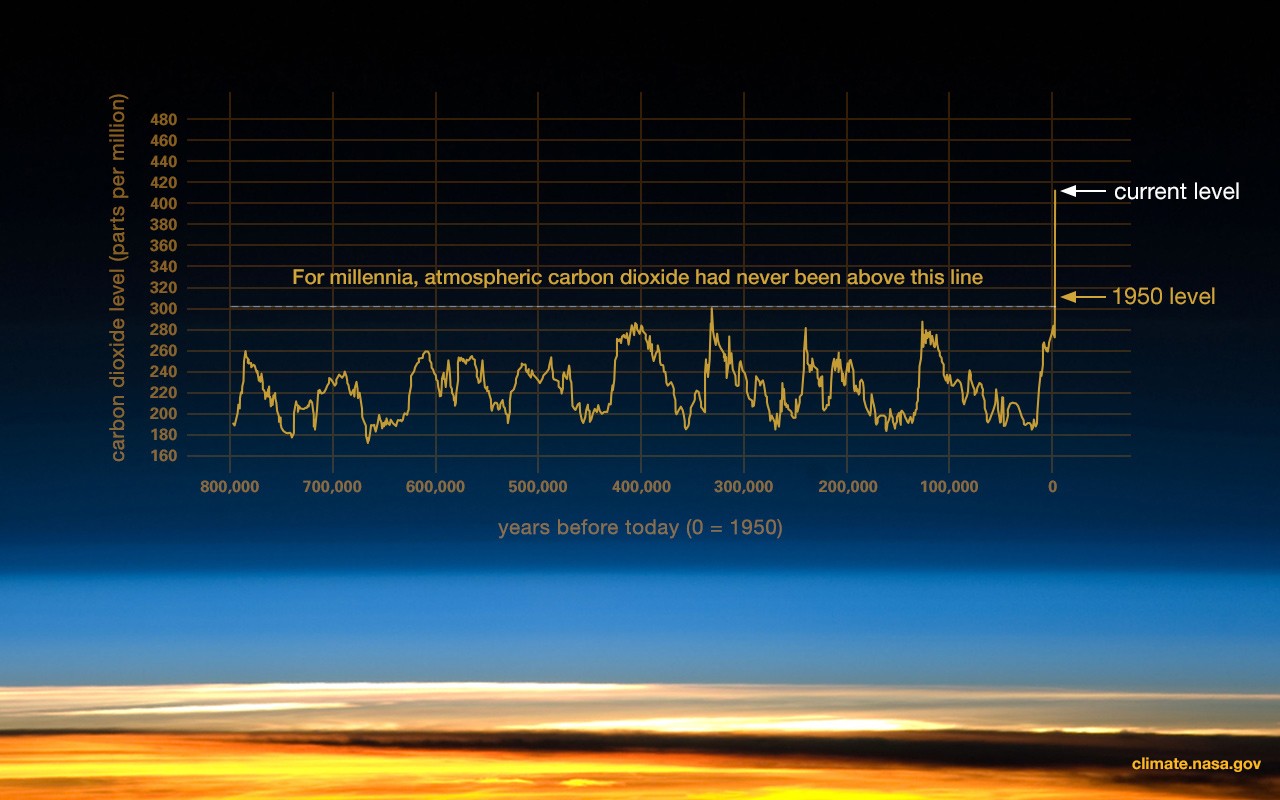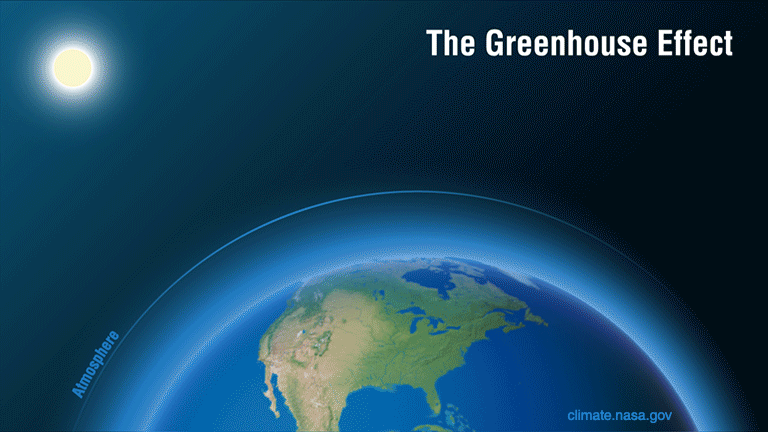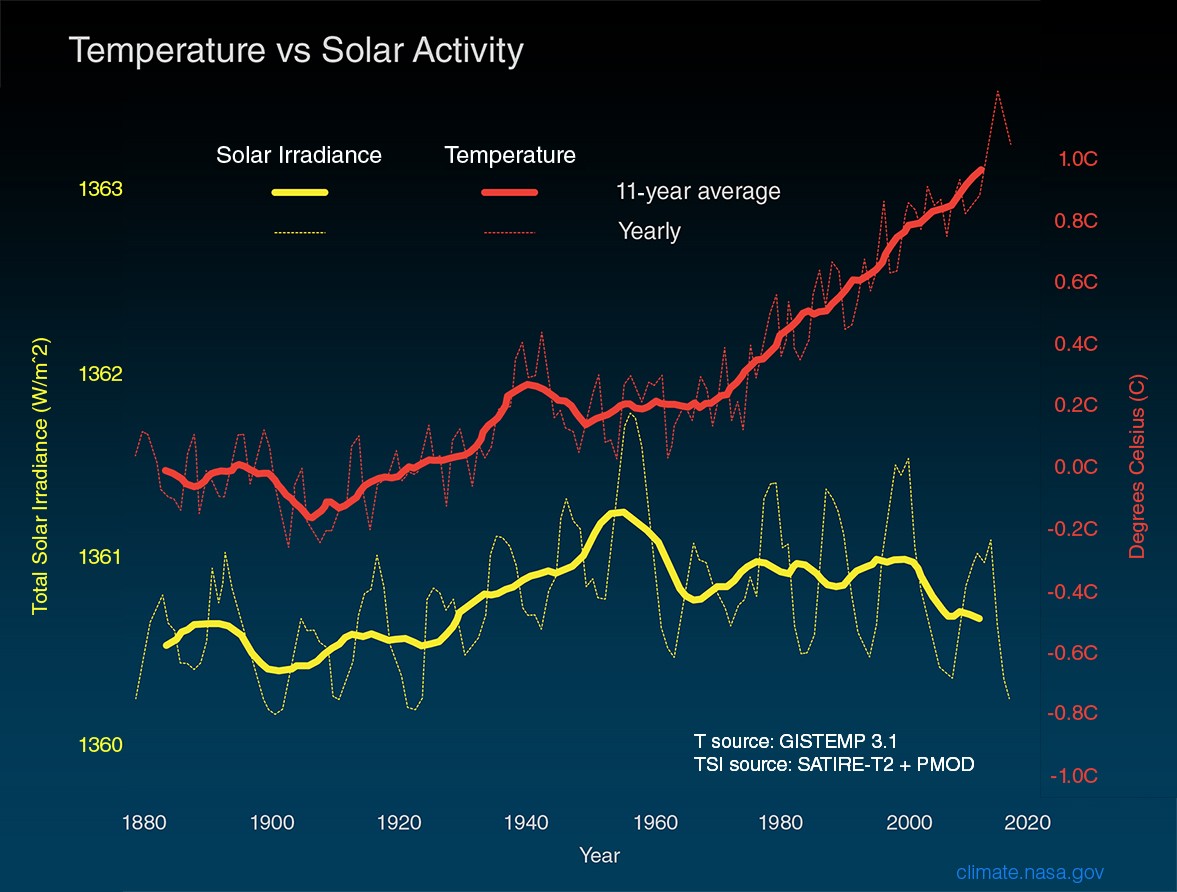
the facts
The planet’s average surface temperature has risen about 1.62 degrees Fahrenheit (0.9 degrees Celsius) since the late 19th century, a change driven largely by increased carbon dioxide and other human-made emissions into the atmosphere.
The current warming trend is of particular significance because most of it is extremely likely (greater than 95 percent probability) to be the result of human activity since the mid-twentieth century and proceeding at a rate that is unprecedented over decades to millennia.
Causes of climate change
It’s reasonable to assume that changes in the Sun’s energy output would cause the climate to change, since the Sun is the fundamental source of energy that drives our climate system.
Indeed, studies show that solar variability has played a role in past climate changes. For example, a decrease in solar activity coupled with an increase in volcanic activity is thought to have helped trigger the Little Ice Age between approximately 1650 and 1850, when Greenland cooled from 1410 to the 1720s and glaciers advanced in the Alps.
But several lines of evidence show that current global warming cannot be explained by changes in energy from the Sun:
- Since 1750, the average amount of energy coming from the Sun either remained constant or increased slightly.
- If the warming were caused by a more active Sun, then scientists would expect to see warmer temperatures in all layers of the atmosphere. Instead, they have observed a cooling in the upper atmosphere, and a warming at the surface and in the lower parts of the atmosphere. That’s because greenhouse gases are trapping heat in the lower atmosphere.
- Climate models that include solar irradiance changes can’t reproduce the observed temperature trend over the past century or more without including a rise in greenhouse gases.


The Role of Human Activity
In its Fifth Assessment Report, the Intergovernmental Panel on Climate Change, a group of 1,300 independent scientific experts from countries all over the world under the auspices of the United Nations, concluded there’s a more than 95 percent probability that human activities over the past 50 years have warmed our planet.
The industrial activities that our modern civilization depends upon have raised atmospheric carbon dioxide levels from 280 parts per million to 400 parts per million in the last 150 years. The panel also concluded there’s a better than 95 percent probability that human-produced greenhouse gases such as carbon dioxide, methane and nitrous oxide have caused much of the observed increase in Earth’s temperatures over the past 50 years.
The panel’s full Summary for Policymakers report is online at https://www.ipcc.ch/site/assets/uploads/2018/02/ipcc_wg3_ar5_summary-for-policymakers.pdf.
Source: https://climate.nasa.gov/causes/
The UN Secretary General
According to the World Meteorological Organization, the past two decades included 18 of the warmest years since 1850, when records began.
If we do not change course by 2020, we risk missing the point where we can avoid runaway climate change, with disastrous consequences for people and all the natural systems that sustain us.
This dramatic warming in the Arctic is affecting weather patterns across the northern hemisphere.
